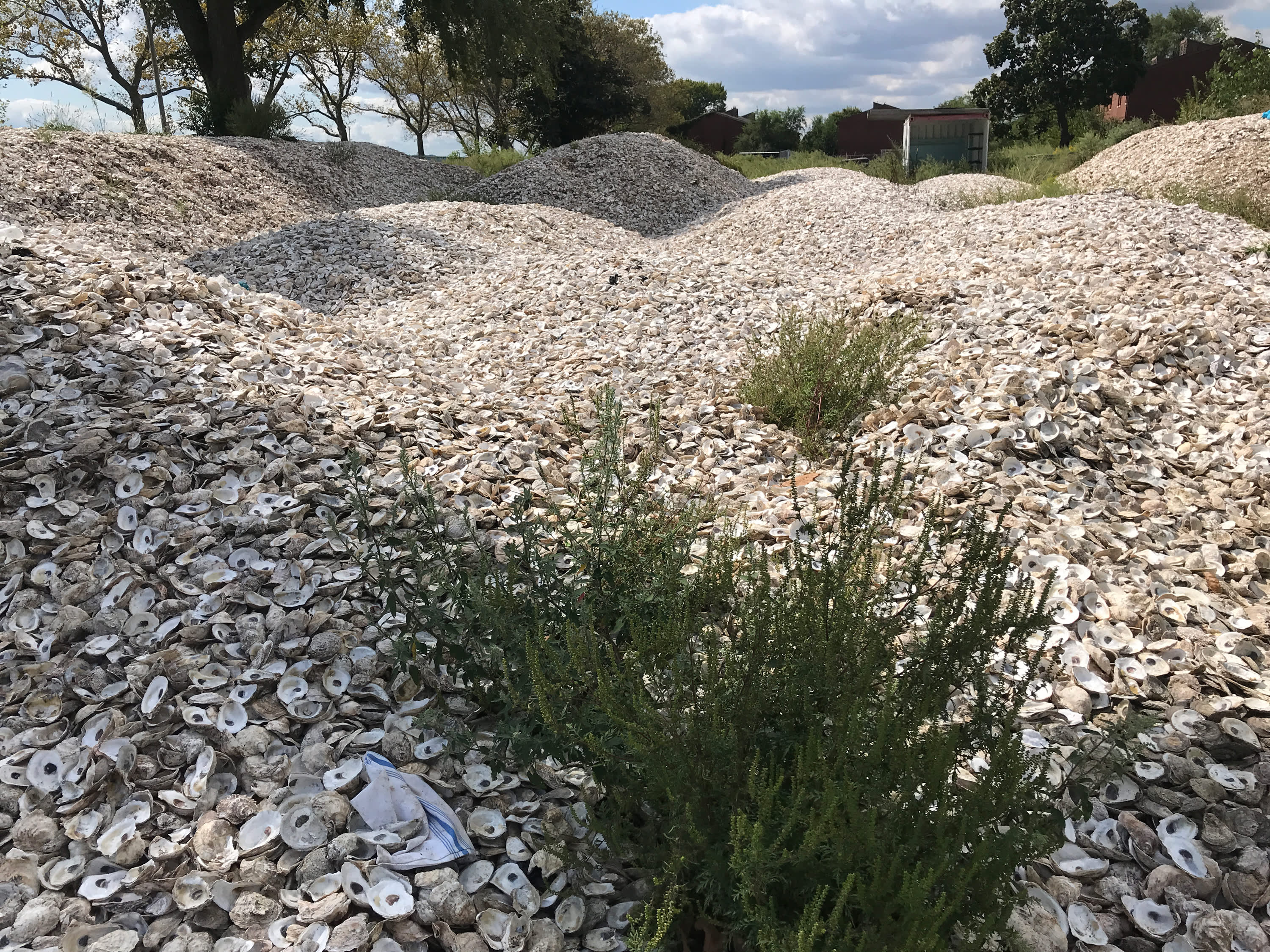
GOVERNORS ISLAND, N.Y. — They are salty, sumptuous and often served opulently on ice. They are also now on the front lines in the fight to protect coastal real estate from climate change. Oysters — more precisely, oyster reefs.
Oyster reefs are hard, natural barriers that protect shorelines from erosion, rising tides and increasingly severe storm surge. They knock down the height and force of waves, but they've been decimated by a century of overharvesting and worsening water quality. Now, they are being restored and repopulated by multiple projects using millions of dollars of public and private funding.
"We've seen a loss of almost 80% of oysters in estuaries worldwide," said Antonio Rodriguez, a University of North Carolina professor of marine sciences who studies oyster reef growth.
He says the best way to protect the billions of dollars' worth of coastal real estate from increasingly severe storm surge and rising sea levels is to go back to nature.
"The goal is to keep people safe, keep their property intact," he said. "And sometimes making your environment more natural, and learning from the way the environment was before we developed it, those are the best techniques."
Sea water is becoming more acidic due to the absorption of carbon dioxide in the atmosphere. About 30% of human-made CO2 is absorbed by the oceans, according to scientists at the University of California, Davis. Ocean acidification makes it harder for shellfish, including oysters, to build their shells and reproduce. Oysters actually help clean the water.
So a massive move is on to repopulate the oyster reefs in projects by states, local municipalities, universities, the Navy and Air Force.
The Billion Oyster Project is one of the most ambitious — a table-to-farm strategy backed by nearly $4 million in state and federal funding from the 2012 Superstorm Sandy. It collects 10,000 pounds of discarded restaurant shells per week, brings them to Governor's Island to cure for a year, then puts them into a hatchery where they spawn oyster larvae that mix with the shells. Depending on its size, one old shell can become a new home to up to 20 new oysters.
"Once Sandy happened and the aftermath of that, we realized really just how valuable oyster reefs in New York Harbor could be," said Madeline Wachtel, deputy director of the project. "New York Harbor used to have over 200,000 acres of oyster reefs protecting the shoreline. And that population is virtually extinct."
The project operates out of the New York Harbor School, a public high school based on the island. Students divide thousands and thousands of shells into small, permeable bags, which then go into large, bath-tub like tanks for several weeks. Once they've grown, they are strategically placed in the harbor. The goal is to put 1 billion live oysters across 100 acres of reefs by 2035 — bag by bag.
"We want to grow the next generation of stewards who are going to know how to steward their local environment," said Wachtel.
They are not the only volunteers in the project. More than 70 New York City area restaurants are donating their wholly eaten half shells to Billion Oyster, collecting them in trash bins and loading them onto trucks weekly.
Millions of oyster shells curing on New York's Governors Island.
Diana Olick | CNBC
At Manhattans' iconic Gramercy Tavern, where the menu celebrates locally sourced, sustainable food, Chef Michael Anthony was fascinated by the idea.
"When I learned a little bit more about their technique for compressing them in cages and reintroducing spat, baby oysters, and dropping them back into New York Harbor, they had me hooked," said Anthony. "We're lucky to live and work in New York City where we have access to some of the freshest and the best, the widest variety, of species anywhere in the world. But with that comes a responsibility of the choices that we make."
Projects are underway up and down the East Coast as well as in parts of California and Washington state. Permitting can often be tricky, and poachers are a danger to fledgling new reefs, but the investments are growing.
In Louisiana, where oysters are big business, local and state government and nongovernmental organizations have invested more than $70 million in constructing oyster reefs for shoreline protection benefits.
"Louisiana's 2012 Comprehensive Master Plan for a Sustainable Coast (CPRA 2012) includes constructed oyster reefs as a coastal restoration technique, which may also benefit the oyster resource," according to a paper by the Louisiana Department of Wildlife and Fisheries.
Last spring, Rep. Frank Pallone Jr., D-N.J., introduced legislation to protect coastal communities from the effects of climate change. The Living Shorelines Act would "create a federal grant program through the National Oceanic and Atmospheric Administration to assist states, localities and non-governmental organizations (NGOs) in constructing living shorelines," according to a release.
The legislation provides $50 million in federal funds that would be matched by state and local governments and NGOs applying for grants and projects.
After Superstorm Sandy, the Department of Housing and Urban Development launched a funding project called Rebuild by Design. Winning proposals would get federal funding as well as funding from New York state. The Living Breakwaters Project, of which Billion Oyster is a part, was one of the winners. It showed that it was not only making the coastline more resilient and enhancing the ecology, but it was promoting social resilience, that is, building a community around education on coastal resiliency.
"We want to engage communities everywhere," said Wachtel. "Because that's actually how you get longstanding change, right? If the community and the people that live there and work there are actively involved."
Reaed More
Post a Comment